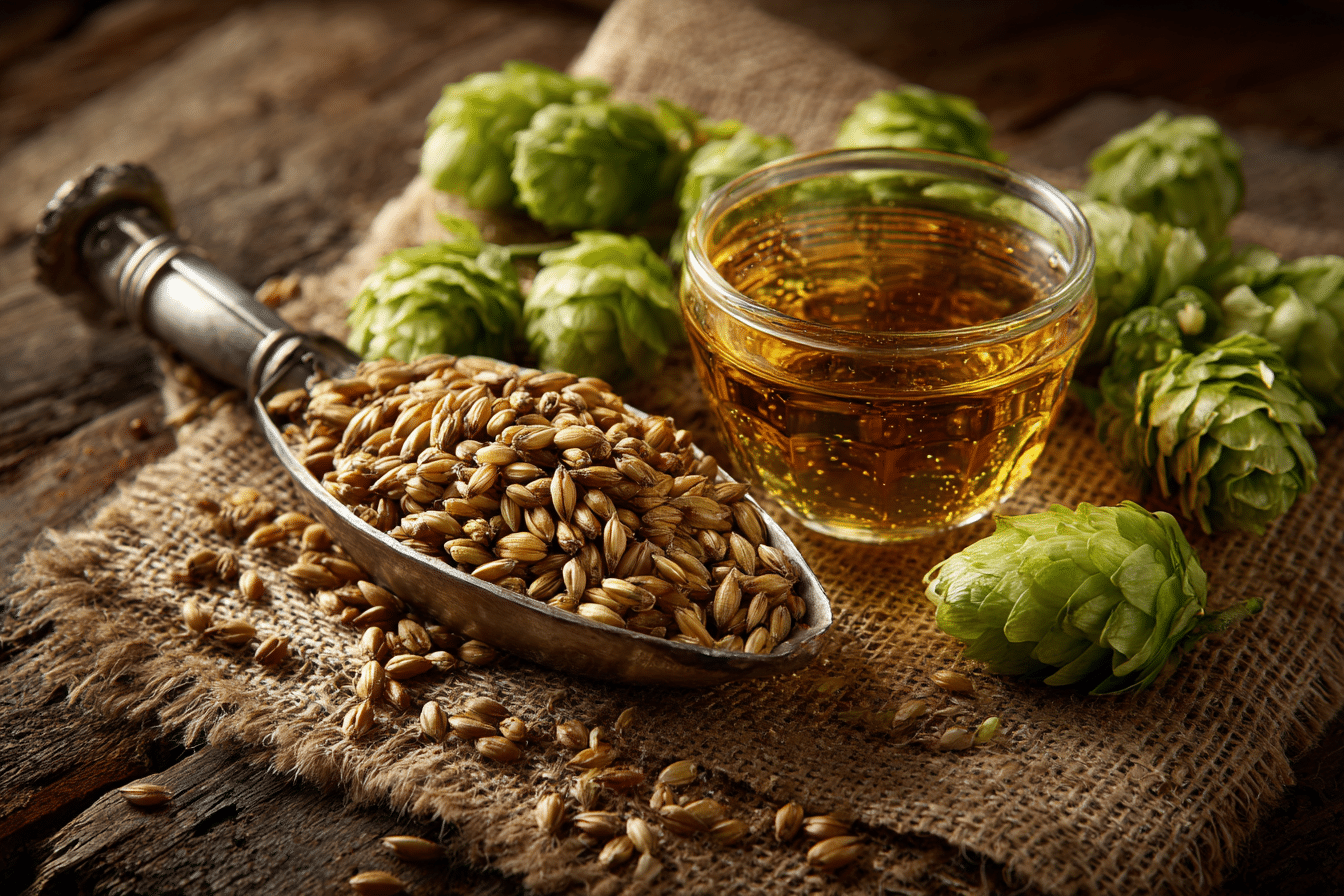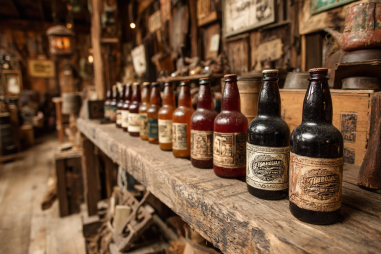American lager is a style loved worldwide for its crisp, refreshing taste and smooth drinkability. What many might not realize is that the hallmark characteristics of this classic brew are rooted deeply in its selection of ingredients. The grains, hops, yeast, and water all play essential roles in crafting the distinct profile that defines an American lager. Whether you’re a homebrewer or simply a curious enthusiast, understanding these building blocks offers an insightful glimpse into why this style continues to be so popular.
The Foundation: Malted Barley and Adjunct Grains
Malted barley serves as the backbone of virtually all beer styles, and American lager is no exception. This grain provides the fermentable sugars that yeast will consume, ultimately generating alcohol and carbon dioxide. However, what makes American lagers stand out is their traditional use of adjunct grains like corn or rice in addition to malted barley.
Malted barley contributes the essential malt flavors, body, and color to the beer. It delivers subtle sweetness and toastiness, which form a nice balance against the crisp dryness. Adjuncts like corn and rice, on the other hand, tend to have a lighter flavor and are highly fermentable. By incorporating these grains, brewers can achieve a lighter body and a cleaner taste profile, attributes that are signature to American lagers.
This combination has historical roots, as adjuncts helped American brewers produce a more economical and easy-drinking beer. Today, many commercial American lagers retain this ingredient mix, though craft brewers may experiment with variations.
The Role of Hops in American Lager Brewing
Hops might not take center stage in American lagers like they do in IPAs or pale ales, but their role is nonetheless vital. The hops used in American lagers generally focus on providing balance rather than bold bitterness or intense aroma. Common hop varieties include American-grown strains such as Cascade, Centennial, or the classic Saaz, which is actually a European noble hop often used to provide subtle floral and spicy nuances.
In American lager brewing, hops are primarily used for their bitterness to offset the sweetness from malt and adjunct grains, ensuring that the beer remains refreshing and not cloying. The hop levels are modest, resulting in a low to medium bitterness that complements rather than dominates. Additionally, the hop aroma is usually mild with light floral, spicy, or earthy notes contributing to the beer’s clean character.
Yeast Strains Specific to Lager Fermentation
Yeast is one of the most crucial ingredients influencing the character of an American lager. This style employs lager yeast strains, scientifically known as Saccharomyces pastorianus, which ferment at cooler temperatures compared to ale yeasts. Lager yeast fermentation temperatures typically range from 45-55°F (7-13°C), allowing for a slower, more controlled fermentation.
This cool fermentation results in a cleaner, crisper flavor profile with fewer fruity esters and phenols than ales usually boast. The yeast’s clean fermentation allows the malt and hop flavors to shine through distinctly, which is fundamental to the style.
Additionally, lager yeast produces a smooth mouthfeel and a well-rounded finish, contributing to the easy drinkability famed in American lagers. Proper fermentation management is key here, as off-flavors can emerge if yeasts are stressed by higher temperatures or improper handling.
Water Chemistry and Its Impact on Brewing
Water makes up the majority of any beer, so its chemistry directly influences the final product’s flavor, mouthfeel, and appearance. In American lager brewing, water with a balanced mineral content is generally preferred to maintain the clean, crisp profile.
Historically, many lager-producing regions in the United States had soft water, which contributed to the smooth, mellow character of the beer. Water hardness, alkalinity, and specific mineral ions such as calcium, magnesium, sulfate, and chloride all affect how malt sweetness, hop bitterness, and yeast fermentation develop.
For example, increased sulfate levels tend to enhance hop bitterness and dryness, while chloride can accentuate malt sweetness and fullness. Many modern American lager breweries carefully adjust their water chemistry to find the right balance suited to their specific recipe and regional water characteristics.
Sourcing Quality Ingredients
The quality of the grains, hops, yeast, and water all directly impacts the beer’s taste and consistency. Using fresh malted barley that has been properly stored ensures the sugars and enzymes needed for a healthy fermentation remain intact. Similarly, hops must be fresh and stored in oxygen-free conditions, often vacuum-sealed or nitrogen-flushed, to maintain their desirable aroma and bitterness compounds.
Yeast vitality is critical—brewers often propagate yeast from trusted cultures or purchase high-quality liquid or dehydrated yeast strains from professional suppliers to ensure a clean fermentation. Lastly, maintaining consistent, clean water free from off-flavors such as chlorine or sulfur compounds is essential.
Many American lagers rely on a combination of locally sourced water and imported or domestic grains and hops, showcasing the importance of supply chain and ingredient stewardship in brewing excellence.
Ingredient Substitutions and Their Impact on Style
Though American lager recipes traditionally use malted barley and adjunct grains along with selected hop varieties and cold-fermenting yeast, brewers sometimes experiment with substitutions that can alter the beer’s classic profile.
- Adjunct Alternatives: Brewers replacing corn or rice with wheat or oats may end up with a fuller body and different mouthfeel, shifting the beer away from the signature crispness towards something richer.
- Hop Varieties: Using more aromatic or bitter hop varieties, or increasing hop additions, can give the lager more pronounced bitterness or floral notes, nudging it closer to pale lager or even IPA territory.
- Yeast Variations: Employing ale yeasts or hybrid strains can introduce fruity esters or spicy phenols, changing the beer’s clean character entirely.
- Water Modifications: Adjusting mineral content significantly can impact mouthfeel and balance. For instance, very soft water may result in a flat-tasting beer, whereas very hard, alkaline water may impart harshness.
While these substitutions enable creativity, they also demonstrate how carefully balanced the original American lager ingredient list is to achieve its desired profile.
Why Ingredients Matter to American Lagers
Understanding the ingredients in American lager brewing reveals much about the style’s enduring popularity. The careful choice of malted barley combined with light adjunct grains creates a body that is light yet flavorful. The restrained use of hops maintains balance and contributes subtle complexity without overpowering. Lager yeast’s cold fermentation produces a clean, crisp taste distinct from ales, and water chemistry fine-tunes these elements into harmony.
Each ingredient is a building block, and together they forge a beer that is refreshing, sessionable, and approachable. For brewers, selecting and managing these components thoughtfully is key to crafting an authentic American lager. For beer lovers, appreciating these subtle ingredient interactions can deepen enjoyment of this beloved style.







